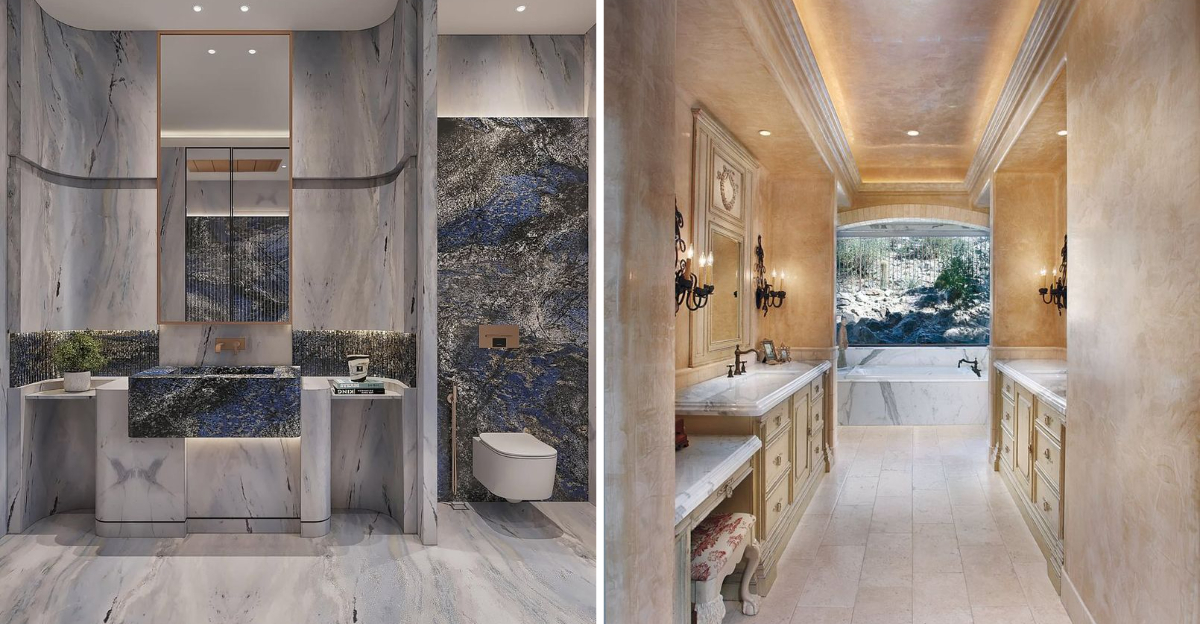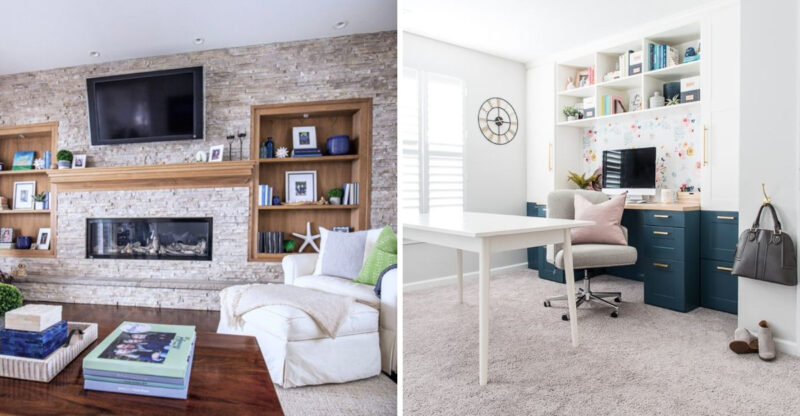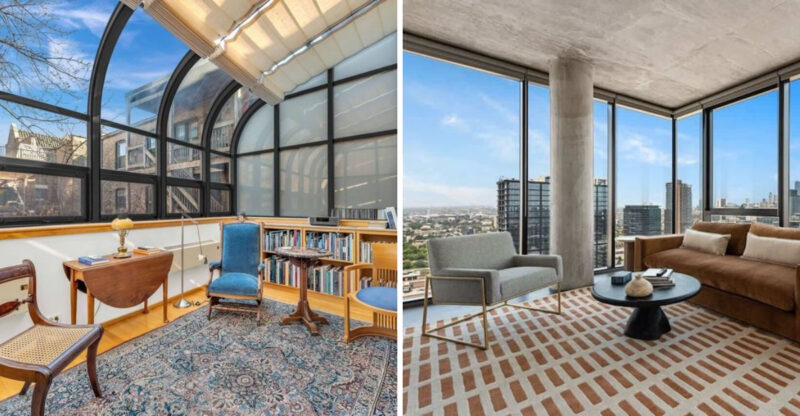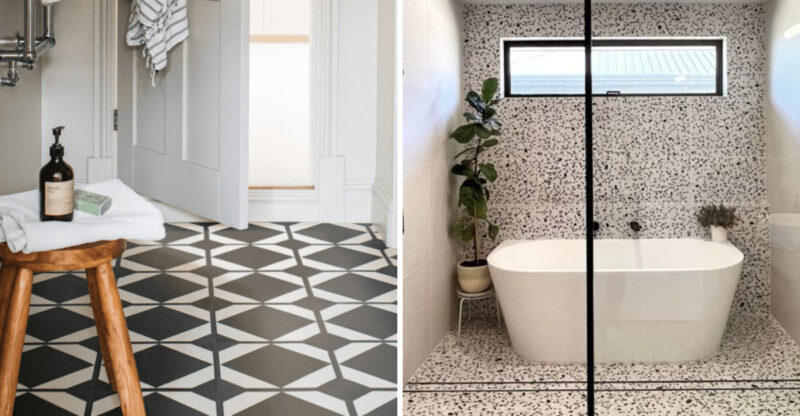Georgia Bathroom Trends That Cost A Fortune But Add Little Value

When you’re renovating your Georgia bathroom, it’s easy to get swept up in all the fancy trends flooding home design magazines and social media.
However, not every expensive upgrade will boost your home’s value or make your daily routine better. Some pricey choices look stunning in photos but turn into costly mistakes that future buyers won’t appreciate or that you’ll regret down the road.
1. Gold-Plated Fixtures and Hardware
If you’re thinking about covering every fixture in gold plating, hold that thought. Gold-plated faucets, towel bars, and cabinet handles can run you thousands of dollars more than standard finishes like brushed nickel or chrome. The problem isn’t just the upfront cost.
Gold finishes often look too flashy for most buyers’ tastes, especially in Georgia’s more traditional home markets. What seems luxurious to you might feel gaudy to someone else. Plus, gold plating can wear off over time, showing tarnish and scratches that make your bathroom look dated rather than elegant.
I’d recommend sticking with timeless finishes that appeal to a broader range of buyers and won’t break your renovation budget.
2. Heated Marble Floors Throughout
Did you know that installing heated marble floors can cost between $15 to $25 per square foot just for the heating system alone? Add in premium marble tiles, and you’re looking at a massive expense. Sure, warm floors feel nice on cold Georgia mornings, but our winters aren’t harsh enough to justify this luxury for most homeowners.
Buyers in Atlanta or Savannah won’t pay extra for heated floors the way buyers in Minnesota might. The maintenance costs add up too since marble needs regular sealing and special cleaning products. When the heating system breaks, repairs get complicated and expensive.
Consider porcelain tiles that mimic marble instead—they’re durable, affordable, and don’t require the same upkeep.
3. Custom Steam Shower Systems
How often would you actually use a steam shower? Most people think they’ll use it daily, but the reality is different. Custom steam showers can cost anywhere from $3,000 to $10,000 or more, depending on the features you choose. Installation requires specialized waterproofing, electrical work, and ventilation systems.
Here’s the catch: steam showers need regular maintenance to prevent mold and mildew buildup in Georgia’s already humid climate. They also use significant amounts of water and electricity, driving up your utility bills. When it comes time to sell, most buyers see them as a maintenance headache rather than a selling point.
A quality rainfall showerhead costs a fraction of the price and delivers a spa-like experience without the complications.
4. Designer Wallpaper in Wet Areas
It’s tempting to splurge on that gorgeous designer wallpaper you saw in a boutique hotel bathroom. High-end wallpaper can cost $100 to $300 per roll, and bathrooms aren’t small projects. Even with moisture-resistant varieties, wallpaper in bathrooms faces constant exposure to humidity, steam, and water splashes.
Georgia’s climate makes this worse since humidity levels stay high much of the year. The wallpaper eventually peels, bubbles, or develops mold spots, especially near showers and tubs. Removing damaged wallpaper later becomes another expensive project that damages walls underneath.
Paint designed for bathrooms or ceramic tile accent walls give you style without the moisture problems. These options cost less upfront and last much longer in humid conditions.
5. Freestanding Soaking Tubs
Though freestanding tubs look absolutely stunning as bathroom centerpieces, they’re not practical for most families. These statement pieces cost between $1,500 and $5,000, not including the plumbing modifications needed to install them. They take up considerable floor space that smaller Georgia bathrooms simply don’t have.
Here’s what designers won’t always tell you: freestanding tubs are harder to clean around, and they’re not great if you have kids who need regular baths. The high sides make bathing children or pets difficult and potentially dangerous. Most buyers prefer built-in tubs with shower combinations because they’re more functional for daily use.
Unless you have a massive master bathroom, that floor space would serve you better with additional storage or a larger shower.
6. High-Tech Smart Toilets
Are you ready to spend $2,000 to $7,000 on a toilet? Smart toilets with heated seats, built-in bidets, automatic lids, and ambient lighting sound futuristic and amazing. The reality is that these high-tech thrones come with high-tech problems. When electronic components fail, repairs require specialized technicians and expensive replacement parts.
Many Georgia homeowners find the features gimmicky after the novelty wears off. Older buyers especially feel uncomfortable with all the buttons and settings. The electrical requirements mean additional installation costs, and some models need dedicated circuits.
A quality standard toilet with a separate bidet attachment gives you similar benefits for a fraction of the cost. You’ll save thousands while still enjoying modern comfort and cleanliness.
7. Excessive Recessed Lighting
When contractors suggest adding tons of recessed lights, remember that more isn’t always better. Each recessed light fixture costs $100 to $200 installed, and bathrooms don’t need as many as you might think. Over-lighting creates a harsh, clinical atmosphere that feels more like a hospital than a relaxing spa retreat.
Too many ceiling penetrations also compromise your insulation and can lead to air leaks, which matters for your energy bills in Georgia’s hot summers. The fixtures themselves generate heat, making your air conditioner work harder. Buyers won’t pay extra for a bathroom that feels like an interrogation room.
Strategic lighting with a few well-placed fixtures, plus good natural light if possible, creates better ambiance and costs significantly less to install and operate.
8. Exotic Stone Countertops
If someone’s pushing you toward rare quartzite or exotic granite varieties, ask yourself if it’s worth the premium. Standard granite or quartz countertops cost $50 to $100 per square foot, while exotic stones can run $150 to $300 per square foot. The visual difference often isn’t dramatic enough to justify tripling your countertop budget.
Exotic stones frequently require special sealants and cleaning products, adding ongoing maintenance costs. Some varieties are more porous or prone to staining, which is problematic in bathrooms with toothpaste, makeup, and hair products everywhere. When you sell, buyers care that countertops look nice and function well, not whether the stone came from a remote Brazilian quarry.
Mid-range quartz or granite options deliver beauty, durability, and value without the exotic price tag.
9. Elaborate Tile Mosaics and Accent Walls
Creating intricate tile patterns with tiny mosaic pieces sounds beautiful, but the labor costs skyrocket fast. Installers charge premium rates because each little tile requires careful placement and precision.
Most homebuyers won’t pay extra for your artistic vision. They see a bathroom with tile, not a masterpiece worth thousands more.
Standard subway or large-format tiles look clean and modern without the hefty price tag. Save your money for upgrades that actually improve function. Your wallet will thank you when you skip the complicated designs that take weeks to install and cost a small fortune.
10. Oversized Rainfall Showerheads
Those giant showerheads that look like rain clouds seem luxurious at first glance. But here’s the reality: they guzzle water like nobody’s business and often provide weak pressure.
Georgia’s humidity already makes bathrooms damp enough without adding extra moisture from oversized fixtures. You’ll spend more on water bills and potentially deal with mold issues down the road.
Installation requires special plumbing modifications that aren’t cheap. Most buyers prefer efficient fixtures that conserve water and deliver strong pressure. The novelty wears off quickly when you’re standing under a drizzle instead of a satisfying shower.
11. Built-In Towel Warmers
Warm towels sound fancy, but Georgia’s climate doesn’t exactly call for heated bathroom accessories. You might use this feature a few times in January, then forget about it completely.
These units cost hundreds to buy and require electrical work to install properly. They also consume energy year-round if you leave them plugged in.
Potential buyers see them as unnecessary extras that increase utility costs. A simple hook and a dryer work just fine for 99% of people. Unless you’re running a spa, this upgrade falls into the category of expensive toys rather than valuable improvements that boost resale value.
12. Custom Floating Vanities with Complex Designs
Wall-mounted vanities with elaborate woodwork and hidden lighting look stunning in design magazines. But they’re incredibly expensive to build and install correctly.
These custom pieces require reinforced wall framing and precise measurements. One mistake means starting over with pricey materials.
The floating style also reduces storage space, which frustrates practical homeowners. Buyers often prefer traditional vanities with more cabinet room for everyday items. You’ll spend three times more for something that actually offers less functionality. Simple, well-made vanities with adequate storage appeal to far more people and cost significantly less to install while still looking modern and attractive.
13. Elaborate Chandelier Lighting Fixtures
Hanging a crystal chandelier in your bathroom might seem glamorous, but it’s impractical for several reasons. Moisture and humidity damage delicate fixtures over time, causing rust and corrosion.
These statement pieces cost thousands and require professional installation with special electrical considerations. Cleaning them becomes a tedious chore you’ll dread monthly.
Most buyers find them too formal and out of place in a bathroom setting. Simple, moisture-resistant lighting works better and costs far less. The money you save could go toward upgrades that genuinely improve your home’s value, like better ventilation or quality fixtures that withstand daily use.
14. Venetian Plaster Wall Treatments
This old-world technique creates gorgeous, polished walls that look like marble. Unfortunately, the specialized application process requires master craftsmen who charge premium hourly rates.
Materials alone cost significantly more than regular paint or standard tile. The finish also needs careful maintenance and can stain easily in humid bathroom environments.
When selling your home, buyers rarely appreciate the artistry enough to pay extra. They see walls, not investment-grade art. Regular paint or simple tile achieves a clean look for a fraction of the cost. Save the fancy plaster treatments for living areas where they won’t face constant moisture and where visitors actually notice the difference.
15. High-End Bidet Attachments with Multiple Features
Bidets with heated seats, air dryers, and music players sound futuristic, but they’re overkill for most households. These units cost well over a thousand dollars and need dedicated electrical outlets.
Many Americans still find bidets unusual, which limits your buyer pool when selling. The complex electronics also break down more often than simple fixtures.
Basic bidet attachments offer the same hygiene benefits for under fifty dollars. You don’t need bells and whistles for something this straightforward. Buyers looking for bidets will install their own preferred models anyway. Spending big money on bathroom gadgets rarely translates to higher home values in the Georgia market.






